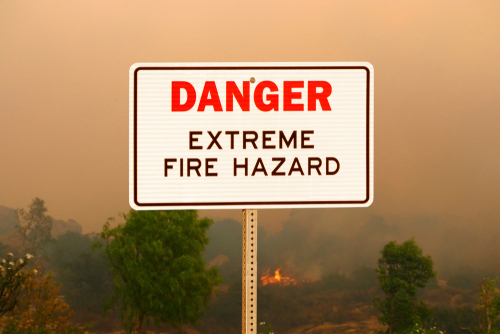Wildfires can happen at any time, though changes in land use combined with the steady and continuing rise of global temperatures over the past decades have helped create the perfect environmental conditions for them to thrive. To compound the problem, more and more people are living and working in communities where the risks posed by wildfire are most severe. It’s imperative that your facility takes every precaution to ensure that it doesn’t become another casualty of these increasingly common natural disasters.
The good news is that despite a great cause for concern, there are steps that you as a facility or property manager can take to protect your buildings in advance. Here are some tips to help you prepare in the event that a wildfire threatens your organization’s assets.
Assess Your Facility’s Current Risk
There are several factors to consider when determining the potential risk for wildfire damage at your facility’s site. Foremost, it is important to understand the conditions at your facility, including weather patterns, types of local vegetation, and topography. Some regions are more fire prone than others, though there are a few key factors that apply, regardless. During your initial visual assessment, take note of the following:
- The presence of wild vegetation, including wild grasses, brush, and timber, as these can be highly combustible. However, vegetation used in landscaping can be equally combustible.
- Plants with a higher probability of combustion:
- Contain volatile oils or resins. These are typically aromatic;
- Have long and/or narrow leaves or needles;
- Have leaves that are fuzzy or waxy;
- Have loose or paper-like bark; and
- Will have dead plant material accumulating beneath them.
Keep in mind that wildfires move both horizontally and vertically. Some of the most devastating fires start on the ground and then travel to bushes and shrubs, where they can then move into treetops or to a roofline. Take note of tall shrubs or overhanging tree branches near your facility or its outbuildings.
Also, recognize that these factors work in reverse. A fire that starts inside your facility can easily spread from your building by jumping to nearby vegetation, from which it can spread outward into the community.
Create a Defensible Space
Once you’ve assessed the vertical and horizontal risks posed by the vegetation and outbuildings adjacent to your building(s), you must create a defensible space around them. This space should consist of three nested zones, each with a unique set of requirements.
Zone 1: within 30 feet (ft) of facility
- Remove all combustible materials, such as fire-prone vegetation, firewood, furniture (such as picnic tables), and/or lumber decking.
- Remove combustible litter from the roof and/or gutters.
- Trim branches that overhang your facility.
Traditionally, the landscaping closest to a building helps keep the facility attractive and inviting to workers, clients, and the community, but it should also be as fire-resistant as possible. For example, plant drought-resistant native plants that are low maintenance instead of ornamental species, and any lawn needs to be well-irrigated. Hardscapes are also good in Zone 1, and features like stone, gravel, or otherwise paved walkways can serve as firebreaks across the property. Using crushed stone rather than mulch for beds that are placed up against the building will also help mitigate the risk of fire reaching the building.
Zone 2: between 30 and 100 ft from facility
- Incorporate hardscape features into your property to act as firebreaks.
- Plant fire-resistant vegetation, and limit trees to individuals or small clusters.
- Prune dead or dying branches regularly, and be sure to remove them.
In addition, any outbuildings located on the property should be placed in Zone 2 and should be a minimum of 50 ft from your facility if they are used to store combustible materials. Double-check your state and local building codes to make sure any fuel tanks are properly located at the minimum required distance (if not farther) from the building. If they are required to be above ground, make sure they are placed on a noncombustible pad.
Zone 3: more than 100 ft from facility
The health of the vegetation should be the maintenance focus in Zone 3. Though the trees may be more densely packed, especially if your facility is in a relatively unpopulated area, you should still prune and remove any dead or dying branches. Be sure to prune both horizontally and vertically to help minimize the potential for fire to spread.
While you don’t need to “rake the forest,” remove any larger concentrations of dead materials from the ground.
Other Steps to Consider
If you have any questions or concerns about how a wildfire event would impact your facility, first and foremost, you should reach out to your local fire department, state fire agency, or a qualified fire management specialist for an on-site consultation. Any of them can help you assess your facility’s risk and help prepare a plan for addressing issues. You could also reach out to your local planning and zoning office if you’re unsure about requirements in your area.
It’s also important to keep in mind that any codes or requirements represent the minimum effort that you should incorporate into your facility. If your building(s) are located in an area with an elevated wildfire risk, it doesn’t hurt to spend a little more on design, materials, and maintenance that could be the difference between keeping your facility safe or having to make a very expensive insurance claim.

